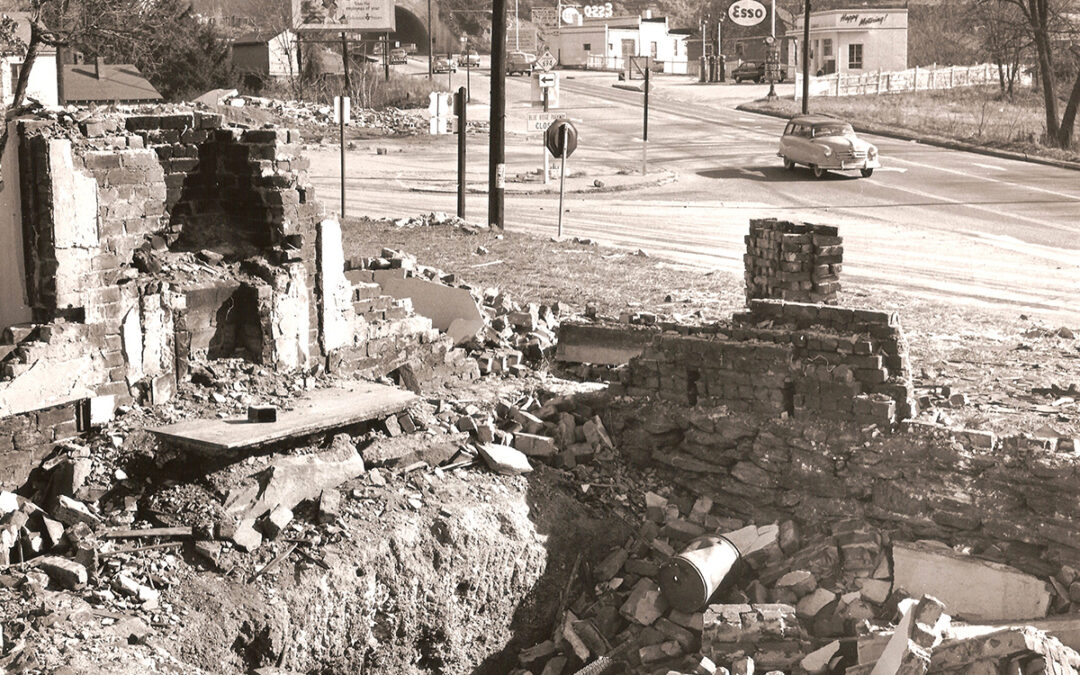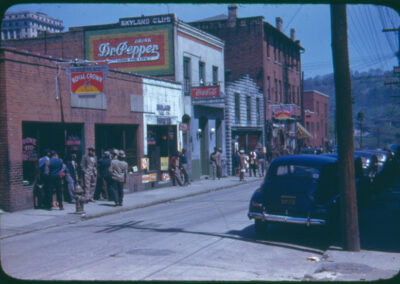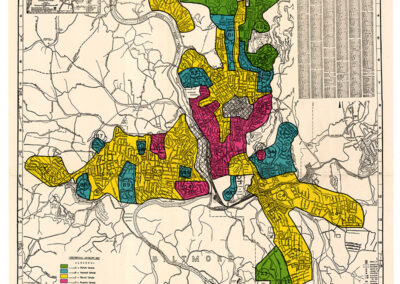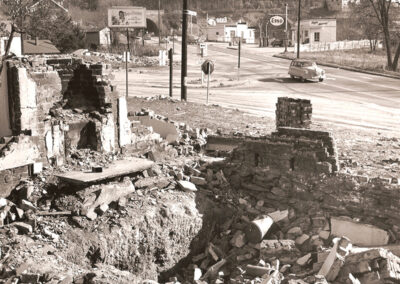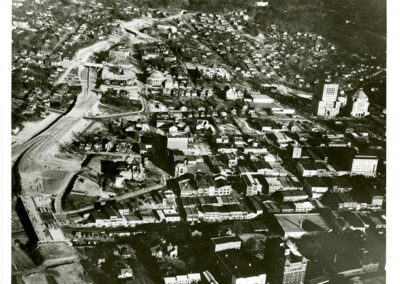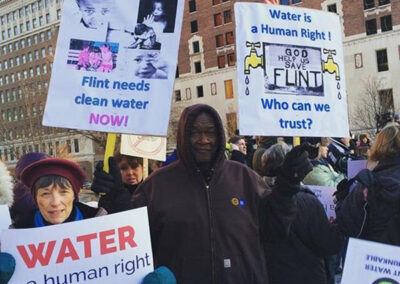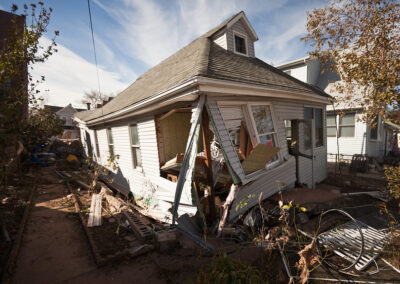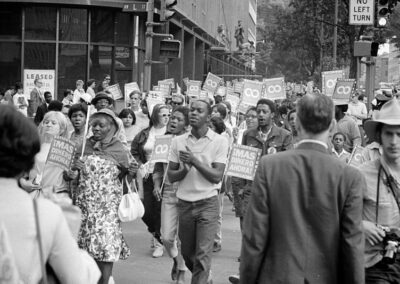
DNA Testing Indicates Animal Agriculture and Sewer Infrastructure are Major Pollution Sources for French Broad River
DNA Testing Indicates Animal Agriculture and Sewer Infrastructure are Major Pollution Sources for French Broad River
MountainTrue’s French Broad Riverkeeper hopes science will inform policy solutions to clean up area waterways.
Asheville, NC — Testing conducted by local conservation organization MountainTrue has confirmed that cattle and faulty or inadequate sewer, septic or water treatment infrastructure are the major sources of E. coli pollution in the French Broad River.
MountainTrue’s French Broad Riverkeeper conducts regular water quality monitoring of rivers and streams throughout the French Broad River Basin, including weekly testing of more than 30 recreation areas from May to September. After decades of slow but consistent improvement to the basin’s water quality, the organization has documented a sharp decline in water quality.
“The difference over that past few years has been disturbing,” explains French Broad Riverkeeper Hartwell Carson. “Take Pearson Bridge in Asheville’s River Arts District: That site passed the EPA’s safe threshold for swimming 81% of the time in 2016. Just four years later, that site failed 81% of the time in 2020. Or Mud Creek in Henderson County, that site passed 52% of the time in 2018, and now it fails 93% of our tests.”
MountainTrue’s standard E. coli testing program measures the E. coli in the river. Levels in the French Broad have been high and rising year-over-year, but the nonprofit couldn’t say for certain what the sources of the pollution were. Determining the major sources of E. coli required more expensive testing to look at the presence of DNA in the river.
“Testing DNA in polluted water is pretty state-of-the-art and it isn’t cheap,” explains Hartwell Carson. “We needed help paying for it, so we approached Senator Chuck Edwards for help.” North Carolina Senator Edwards, whose district includes Henderson and parts of Buncombe County, helped secure state funding to pay for sampling and lab costs. With that funding, MountainTrue looked at the DNA found in 55 water samples to look for genetic fingerprints of E. coli from people, cows, dogs, poultry, sheep and swine.
“Our rivers are very important to our quality of life and our economy,” explains Senator Edwards. “This project is helping us better understand the causes of bacteria pollution in the French Broad River. We need that information to develop solutions that will keep the river clean.”
Of the 55 samples, 44 revealed DNA from cows. Human DNA was the second most prevalent. The results vary, but at nearly every site the primary sources of pollution were cattle followed by human. Dog DNA also showed up as a moderate contributor to E. coli pollution at a few sample sites.
“The French Broad has some clean and clear streams that run through protected public lands, but we’re seeing more and more problem sites that consistently fail the EPA’s safe water standard for E. coli,” says Hartwell Carson. “Until now, we’ve only had educated guesses about where the E. coli was coming from. With this testing, we have the data we need to make more informed decisions about how to clean up our rivers.”
MountainTrue is presenting the results from their DNA testing to local members of the General Assembly and is encouraging the public to advocate for the adoption of a clean rivers policy agenda that includes funding to help farmers, property owners and local governments reduce water pollution.
“Now that we know the sources of E. coli pollution,” says Hartwell Carson. “The next step is to invest in actions that fix the problem.” The public can read about issues affecting water quality, and the policies and reforms needed to fix them at iloverivers.org.
TAKE ACTION TO FIGHT E. COLI POLLUTION IN OUR RIVERS
We’ve done the DNA testing. We know the sources of E. coli pollution. Now we have the solutions to clean up our rivers. Stand up for science-based policies to help farmers fence cattle out of streams and property owners fix their septic systems. And advocate for much-needed investments in wastewater infrastructure.
The Results:
MountainTrue focused their testing on problem sites that had shown high levels of E. coli in previous testing: Hominy Creek, Mud Creek below downtown Hendersonville, Cane Creek and the French Broad River at Pearson Bridge in Asheville’s River Arts District. DNA levels of 0-49 numbers of DNA copies/100mL are considered “very low,” 50-99 “low,” 100-499 “medium,” 500-999 “high,” and 1,000 or above was “very high.” DNA testing provides a general picture of a body of water for approximately 100 meters upstream.
Hominy Creek
Averages for six samples: Cow – 339, Dog, 89, Human – 34.
Every sample taken at Hominy Creek showed cow DNA counts at or above medium levels. The highest level of cow DNA recorded was 511, putting that sample in the high range. Human DNA was also found in every sample, though at low or very low amounts in all samples except one in the medium range. This indicates that upstream agriculture in the watershed is significantly contributing to E. coli impairment, and while human waste from faulty sewers and failing septic systems plays a role, it isn’t the dominant pollution source. This testing site is below the Hominy Creek Greenway, a very popular dog-walking area and the likely reason for higher levels of dog DNA.
French Broad at Pearson Bridge
Averages for six samples: Cow- 270, Dog – 59, Human – 67
Cow DNA was the largest contributor at this site, but levels were more varied than at Hominy Creek. One sample showed cow DNA in the high range at 764, while three other samples presented low levels of cow DNA. Human DNA and dog DNA were also present at this site but at much lower levels. The variability of DNA levels is likely due to the impact of stormwater runoff. When it rains, cow and dog waste are washed in from the surrounding landscape causing a rise in pollution levels.
Cane Creek at Fletcher Park
Averages for six samples: Cow – 334, Human – 47, Dog – 8
The primary source of E. coli pollution in Cane Creek is quite clearly cattle from area farms. Human levels of DNA were very low and nonexistent in two instances.
Mud Creek below Downtown Hendersonville
Average for seven samples: Cow – 251, Human – 120, Dog – 52
Mud Creek was the site with the highest level of human DNA in all our testing. But, even here, levels of cow DNA were more prevalent than human. In three instances, human DNA counties were higher, but the overall average for cow DNA was higher. The pollution sources for Mud Creek are likely cattle, closely followed by human waste from faulty sewers, failing septic systems and inadequate wastewater treatment plants.
About MountainTrue
MountainTrue champions resilient forests, clean waters and healthy communities. We are committed to keeping our mountain region a beautiful place to live, work and play. Our members protect our forests, clean up our rivers, plan vibrant and livable communities, and advocate for a sound and sustainable future for all. MountainTrue is active in the Broad, French Broad, Green, Hiwassee, Little Tennessee, New and Watauga watersheds, and is home to the Broad Riverkeeper, French Broad Riverkeeper, Green Riverkeeper, and Watauga Riverkeeper.
Mountaintrue.org
Media Contact:
Karim Olaechea, MountainTrue Communications Director
E: karim@mountaintrue.org, C: 415-535-9004
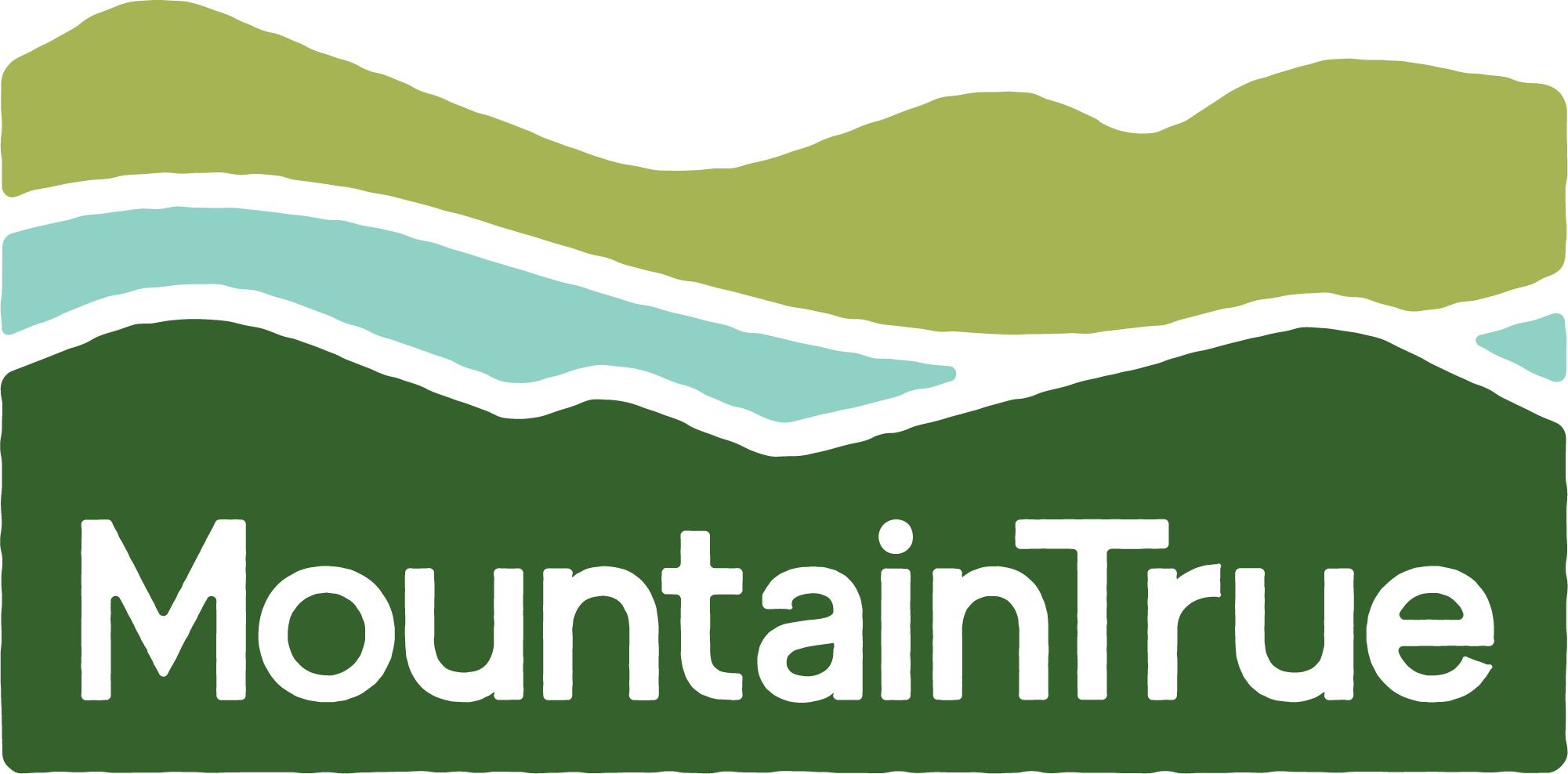
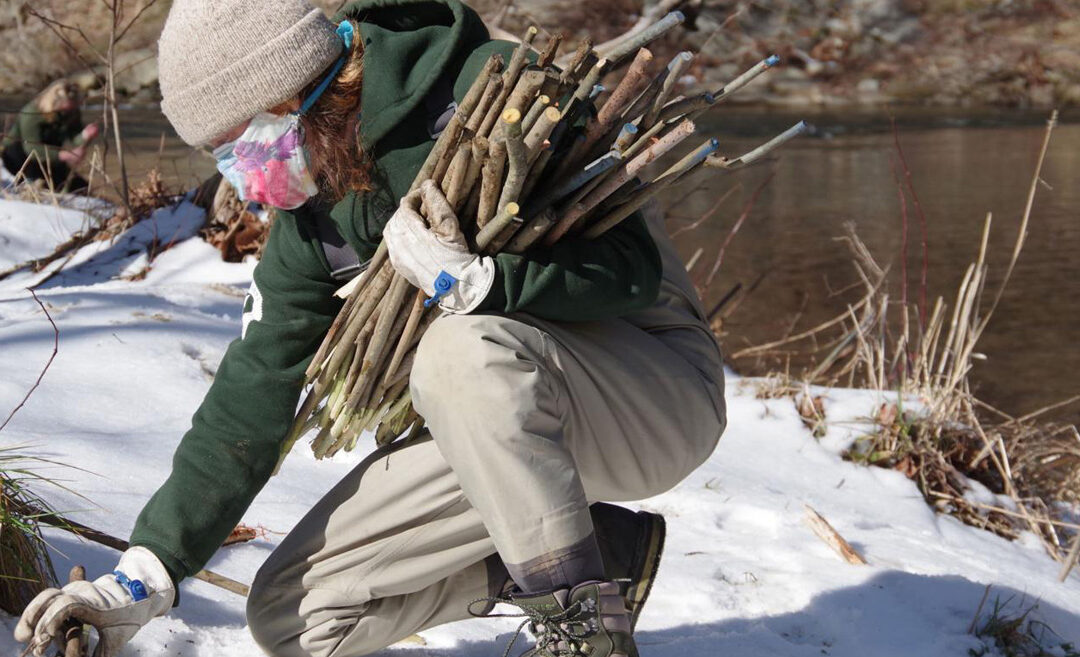
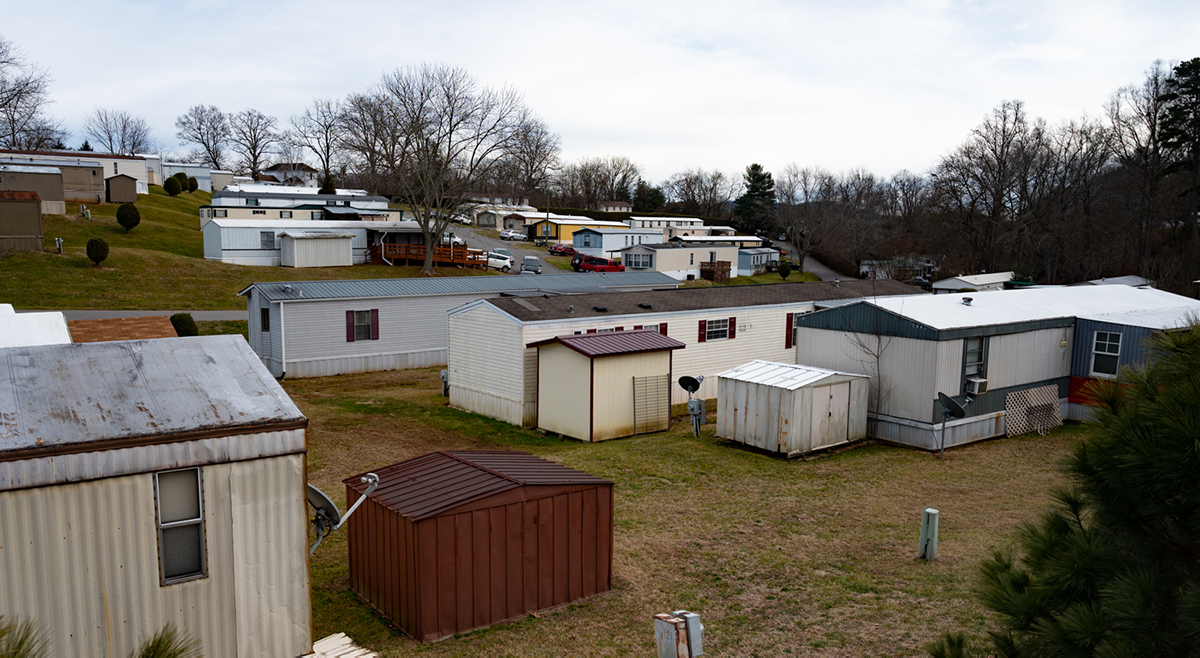
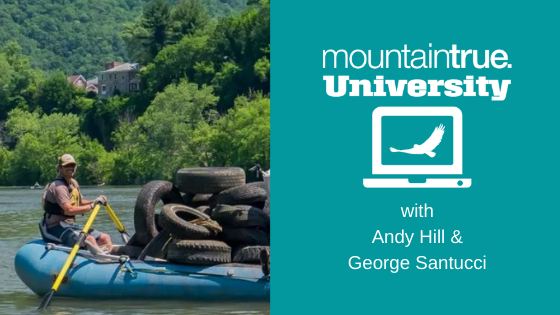 Join us for a High Country sustainability discussion with George Santucci. You may know George as the long-time Director of the New River Conservancy. George has brought his decades of environmental experience to his new role as Sustainability and Special Projects Director for the Town of Boone.
Join us for a High Country sustainability discussion with George Santucci. You may know George as the long-time Director of the New River Conservancy. George has brought his decades of environmental experience to his new role as Sustainability and Special Projects Director for the Town of Boone.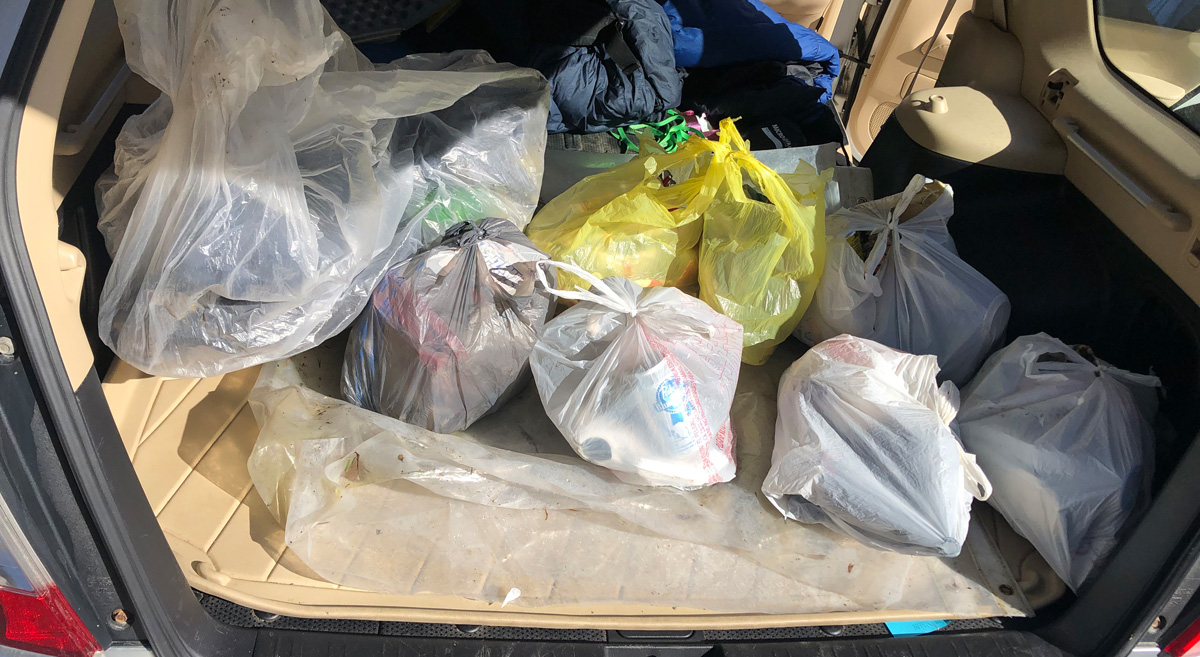
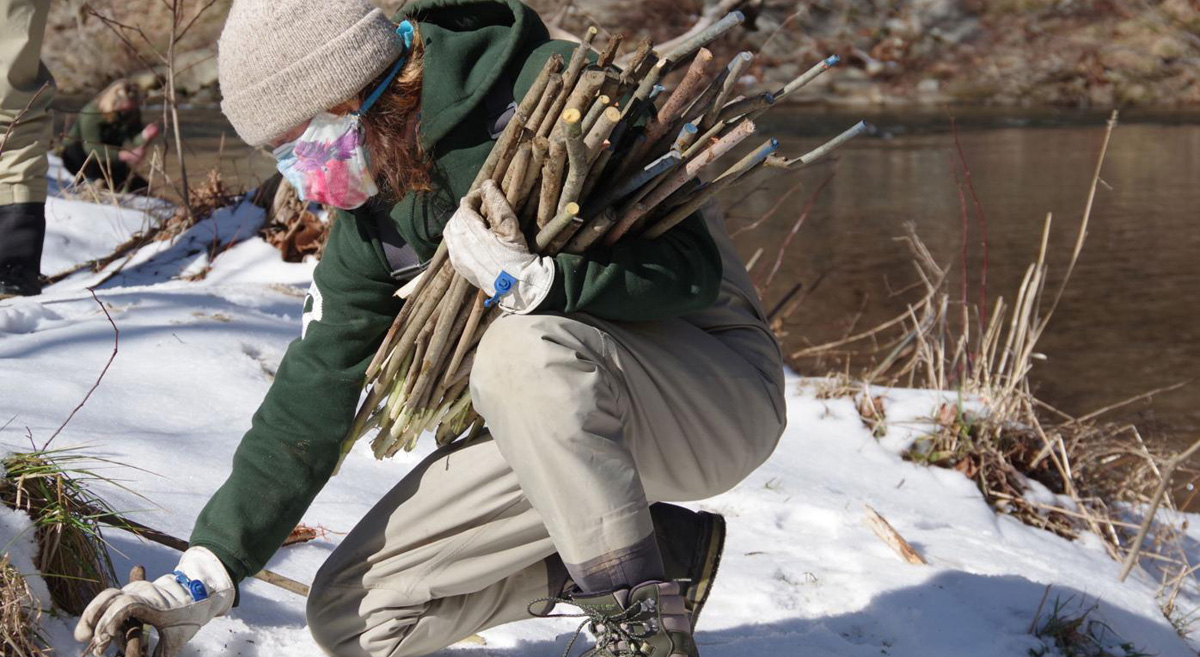 Photo By Moss Brennan
Photo By Moss Brennan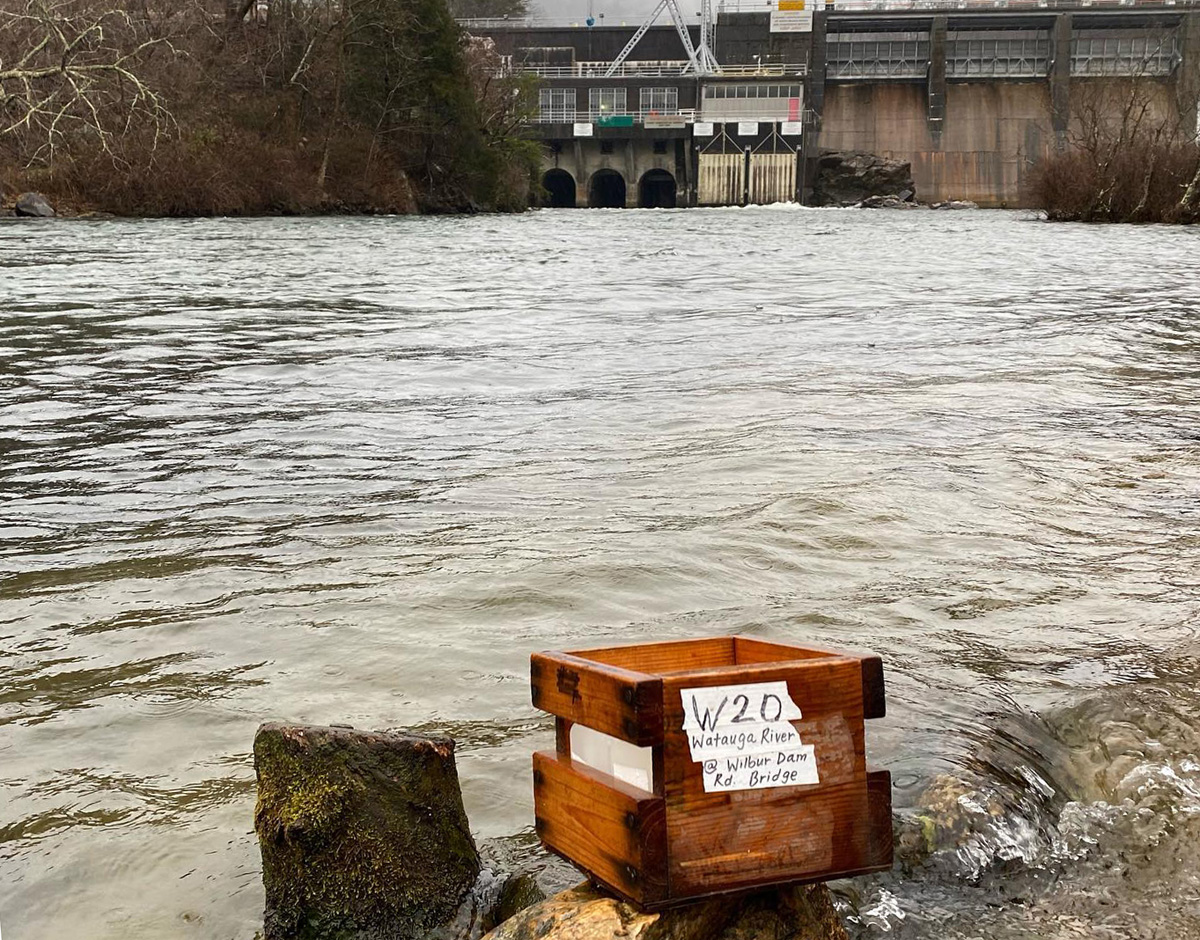 Volunteer Water Information Network (VWIN) Sampling at the Wilbur Dam on the Watauga River.
Volunteer Water Information Network (VWIN) Sampling at the Wilbur Dam on the Watauga River.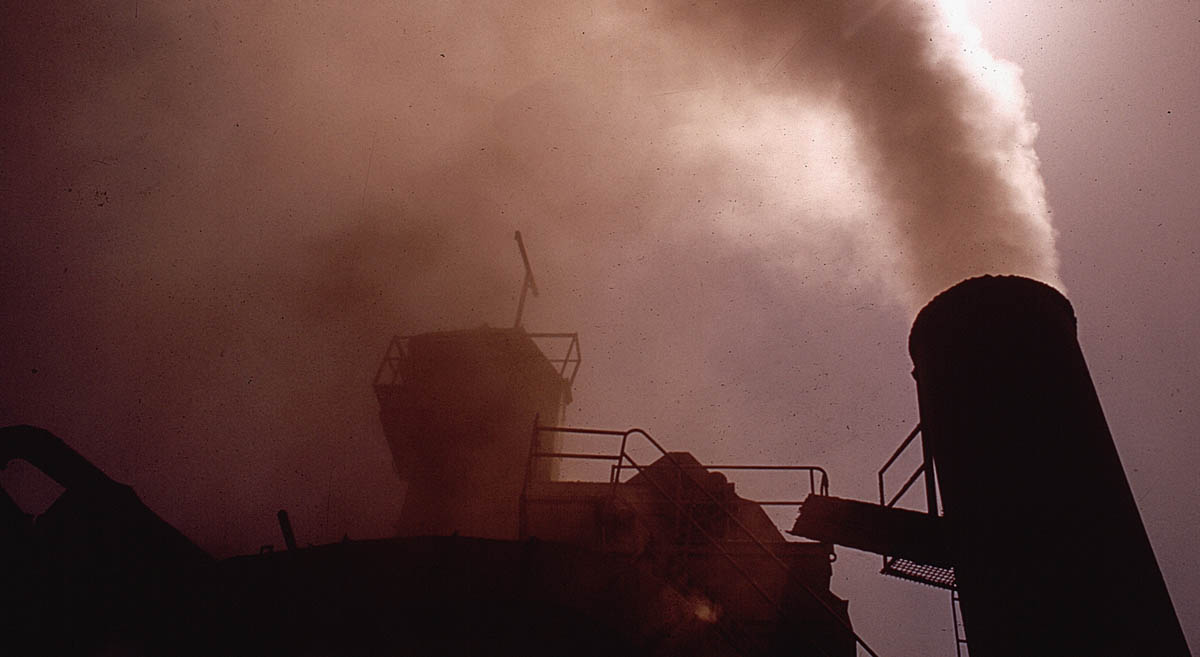
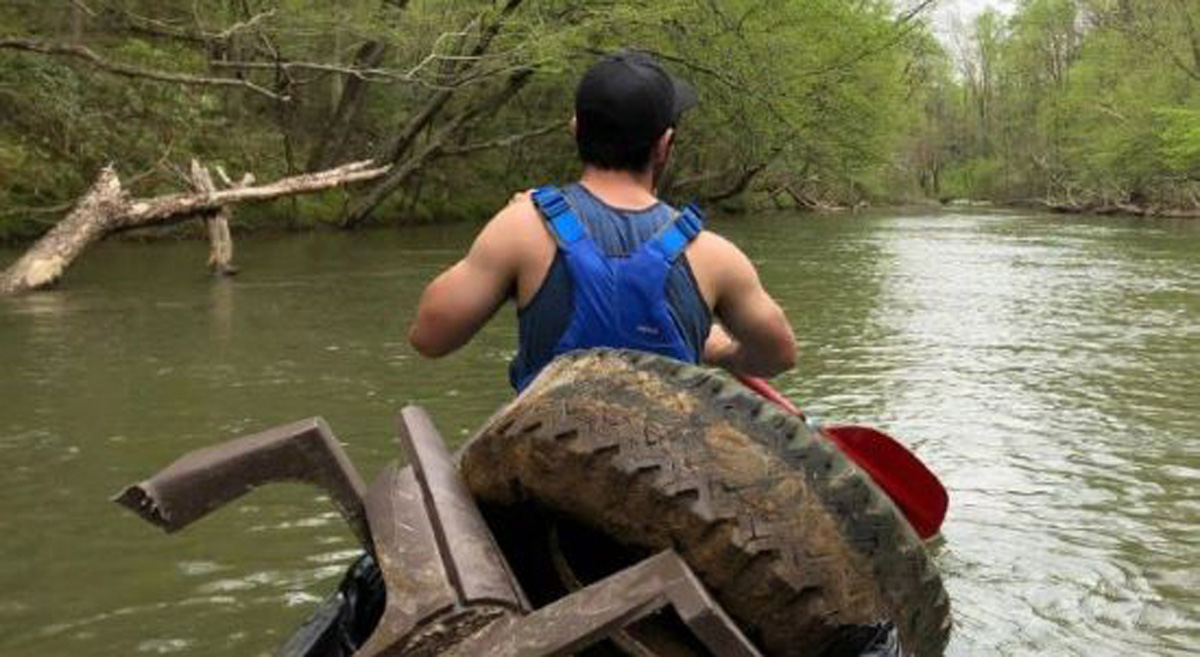
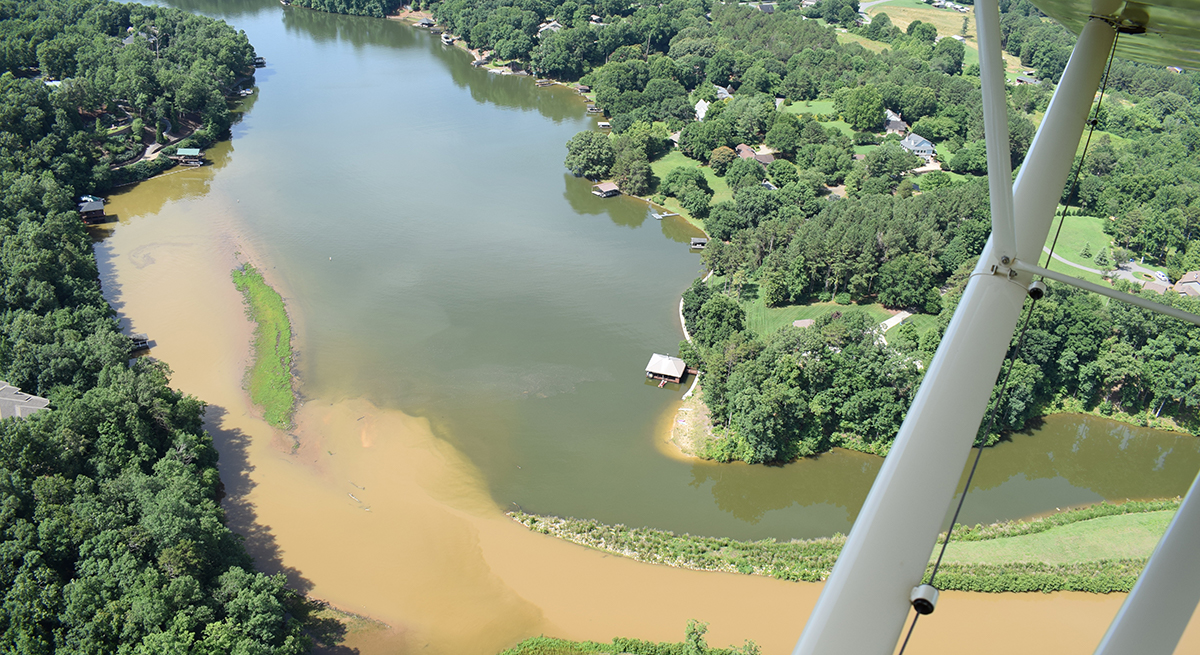
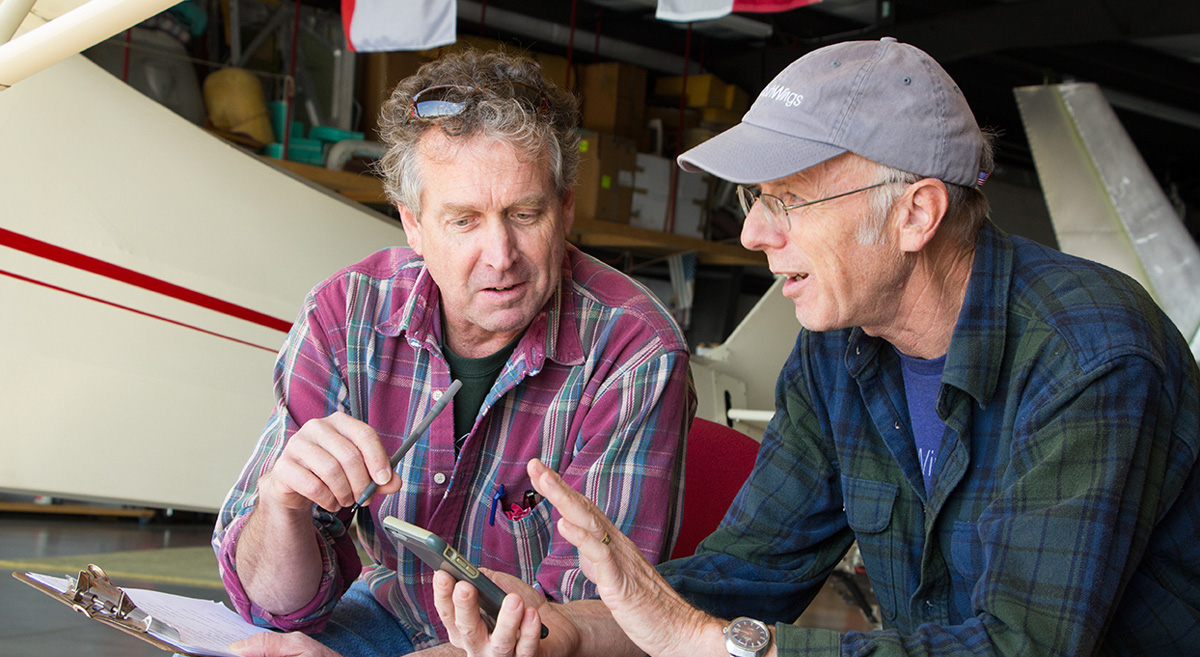 Broad Riverkeeper David Caldwell (left) with SouthWings pilot Peter Stauble (right) discussing their flight plan before takeoff.
Broad Riverkeeper David Caldwell (left) with SouthWings pilot Peter Stauble (right) discussing their flight plan before takeoff.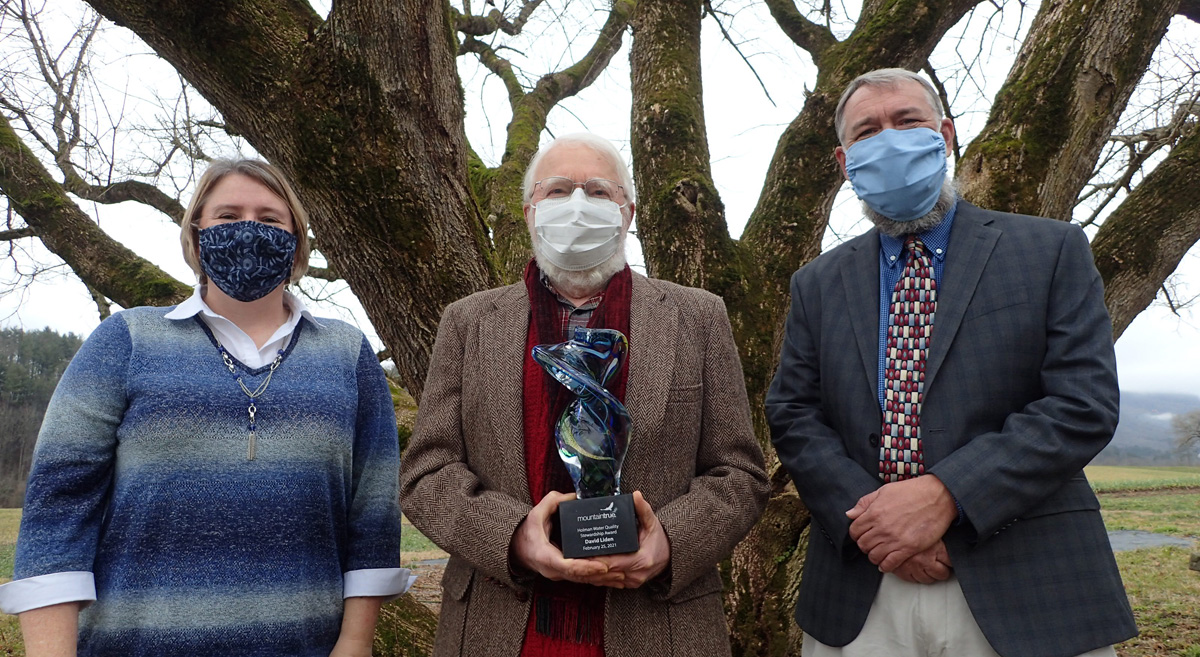 David Liden (center) received the 2021 Holman Water Quality Stewardship Award from MountainTrue Western Regional Director Callie Moore (left) and Hiwassee Watershed Advisory Council Chairperson Jason Chambers (right) at the John C. Campbell Folk School gardens before the online event.
David Liden (center) received the 2021 Holman Water Quality Stewardship Award from MountainTrue Western Regional Director Callie Moore (left) and Hiwassee Watershed Advisory Council Chairperson Jason Chambers (right) at the John C. Campbell Folk School gardens before the online event.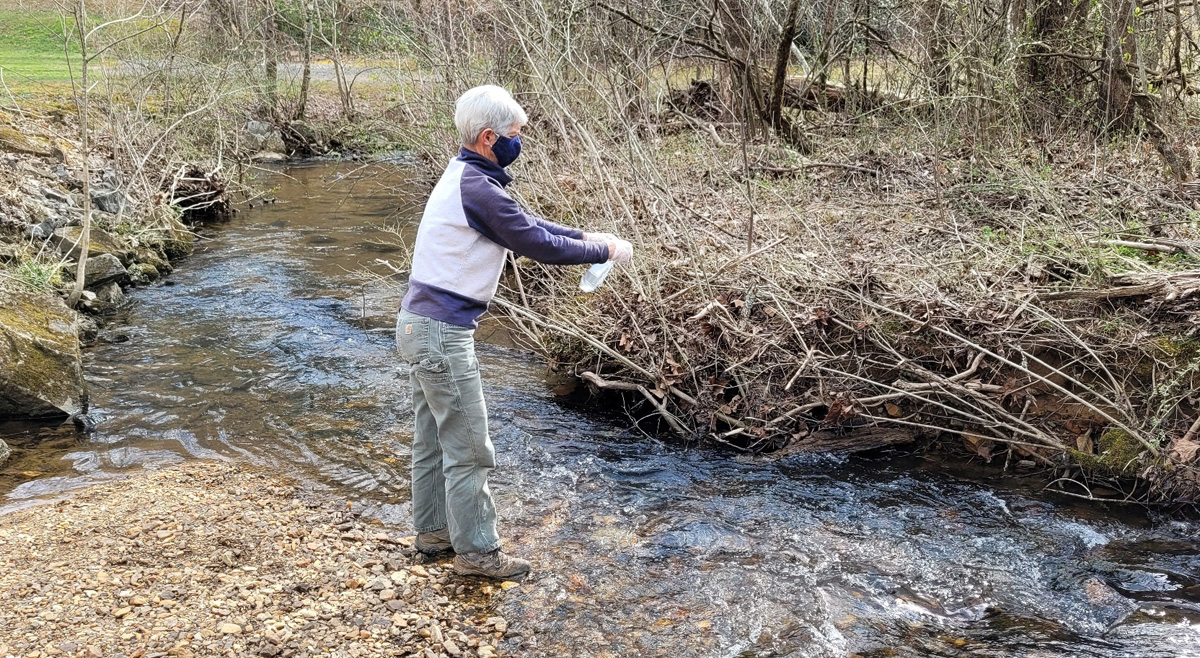
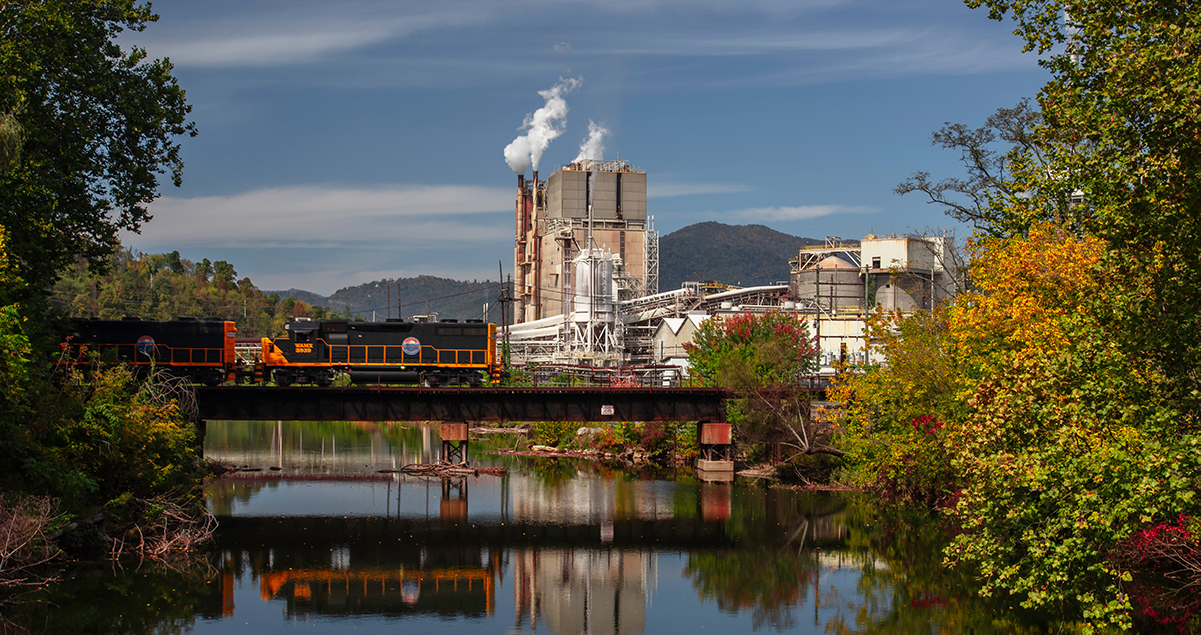
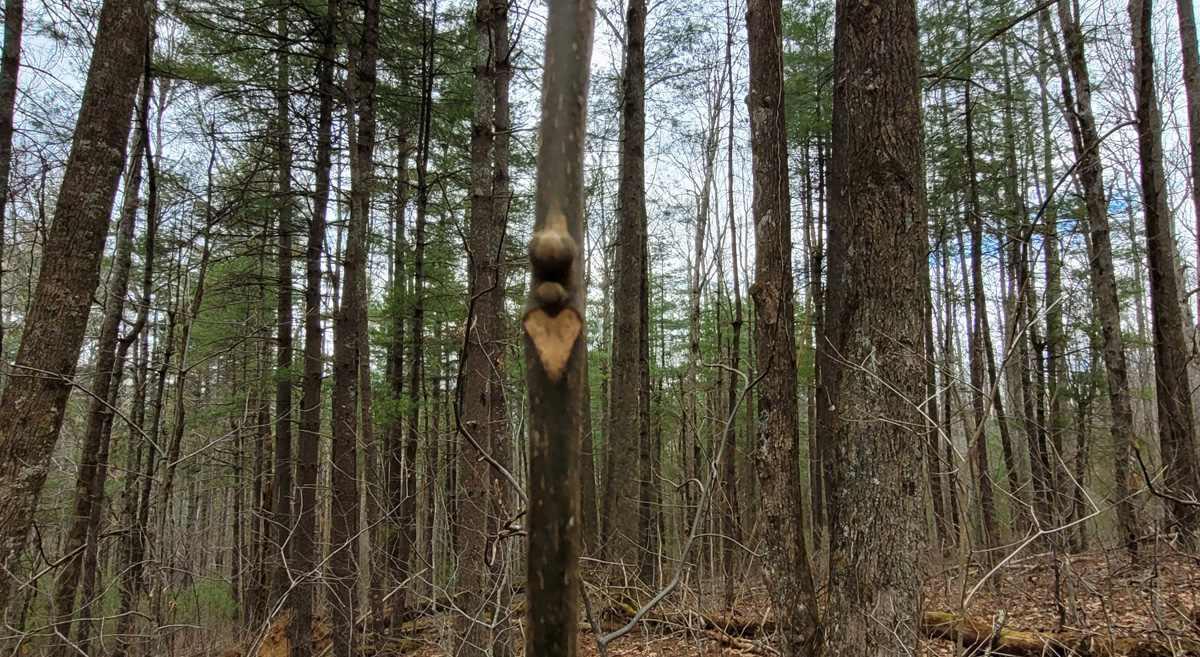 A heart-shaped leaf scar on a young hickory tree. Leaf scars can help you identify native trees in winter.
A heart-shaped leaf scar on a young hickory tree. Leaf scars can help you identify native trees in winter.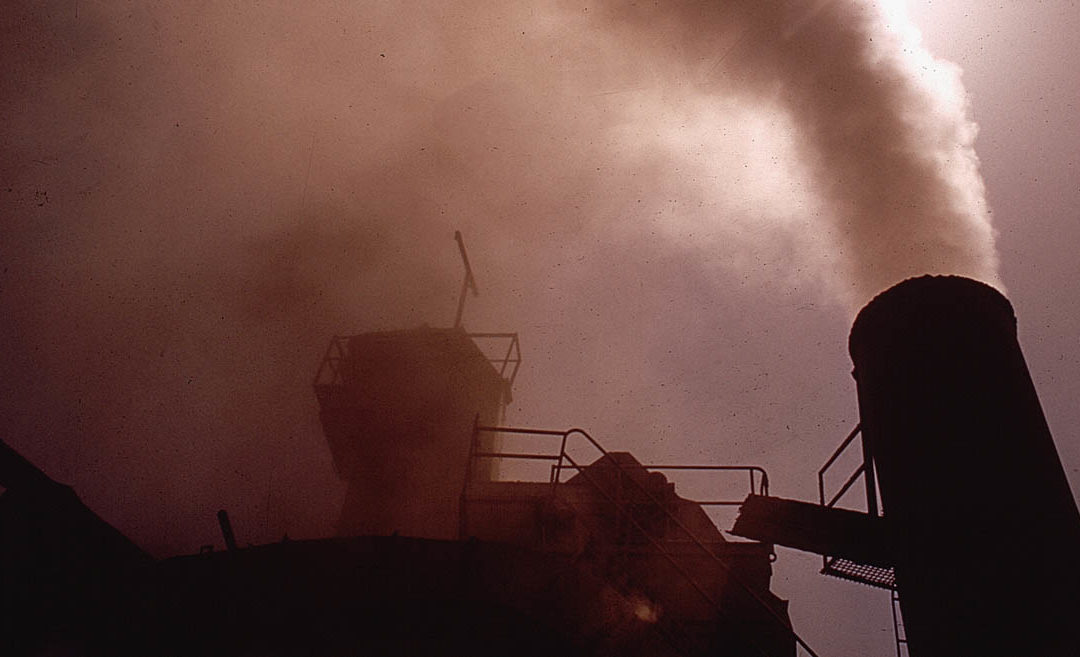
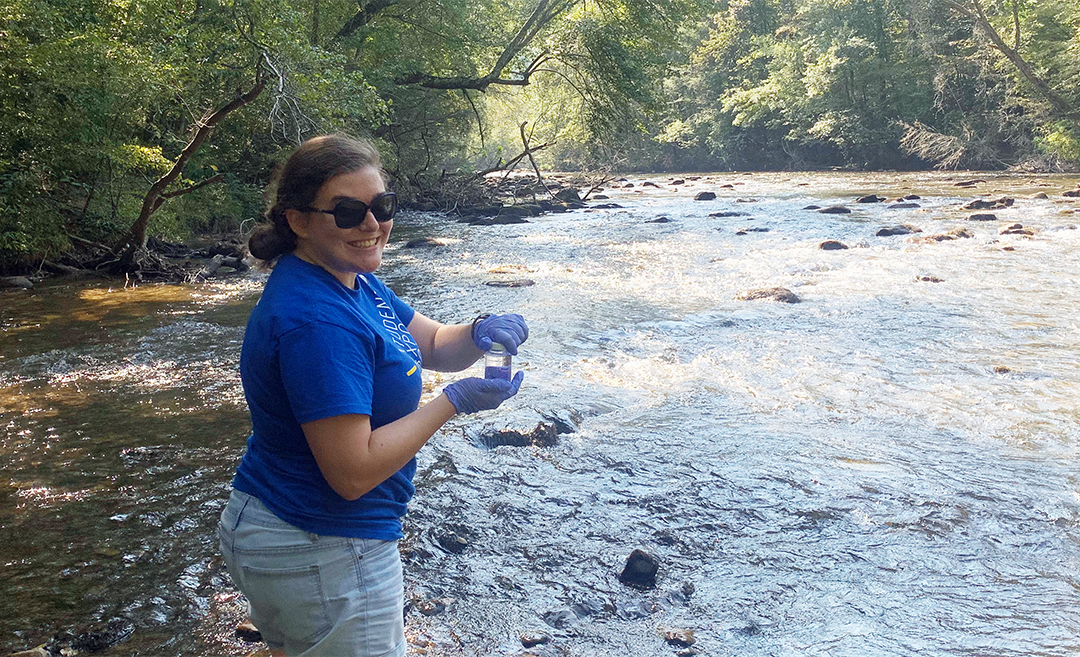
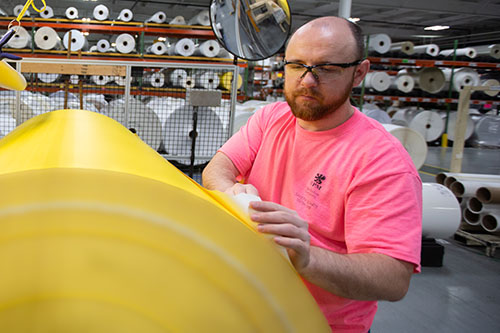 UPM Raflatac develops innovative and sustainable labeling solutions that help businesses move beyond fossil fuels. As one of the world’s leading producers of self-adhesive label materials, it maintains a global network of factories, distribution terminals and sales offices, and operates two factories in Henderson County, North Carolina employing approximately 350 people.
UPM Raflatac develops innovative and sustainable labeling solutions that help businesses move beyond fossil fuels. As one of the world’s leading producers of self-adhesive label materials, it maintains a global network of factories, distribution terminals and sales offices, and operates two factories in Henderson County, North Carolina employing approximately 350 people.
